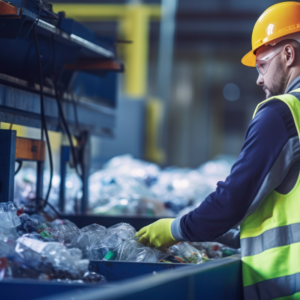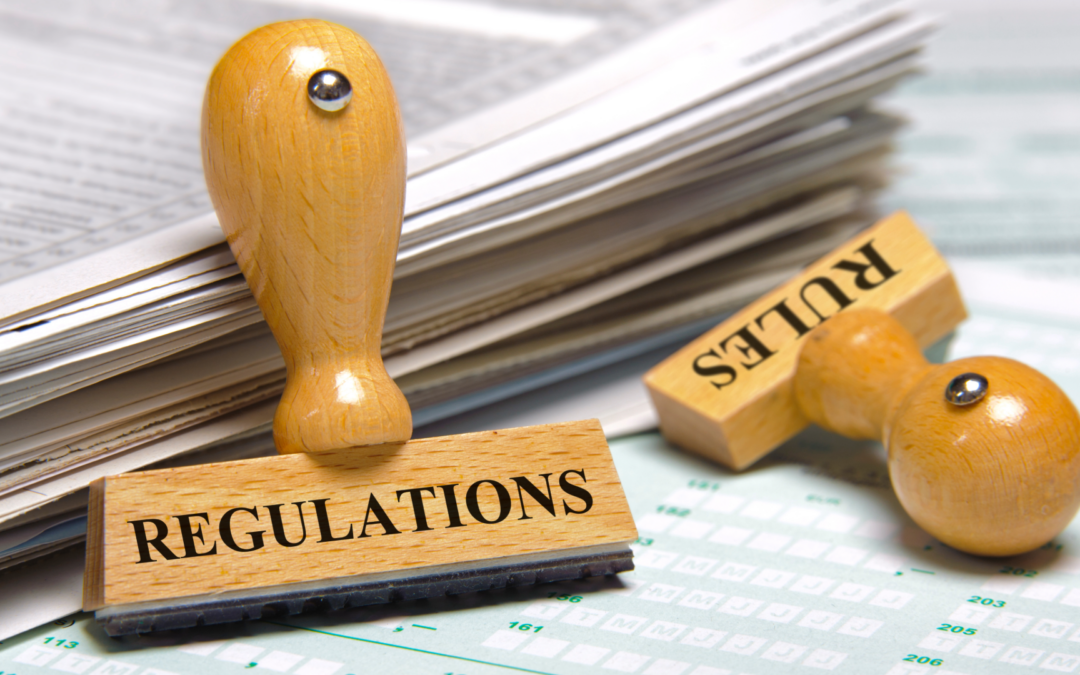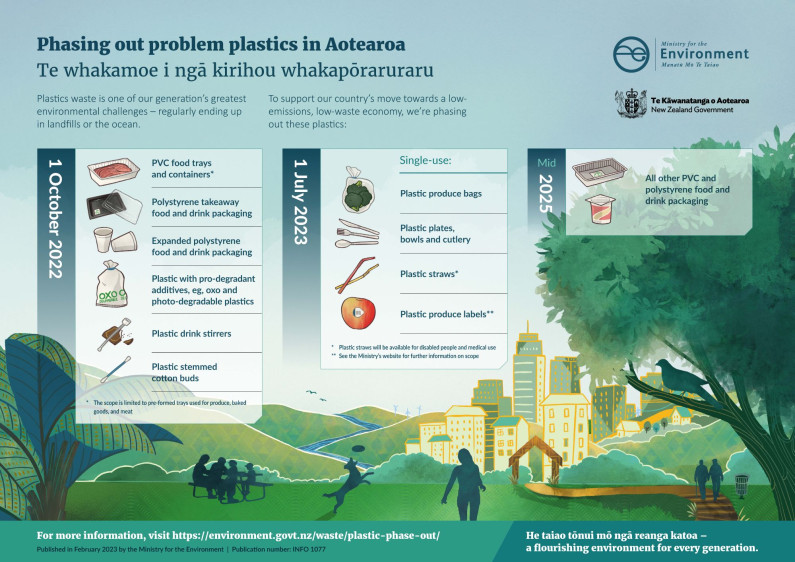A question we often get asked at Hi-Tech is, what are the “bans” when it comes to packaging? “
More specifically “sustainable packaging”.
The short answer is a lot.
More recently, the role that regulations play in this area have been more public, specific, and targeted.
The likes of the Ministry for the Environment (MfE) have continued to play an important part in shaping what good packaging should be and look like. Along with redefining sustainable packaging.
A perfect example of this is the MfE’s approach to tackling problematic packaging. More specifically, materials that are deemed to be a contaminant in the recycling system or hazardous in

our community and environments. The image below outlines a timeline of phasing out those so called “problematic packaging”. This then forces positive change.
So how does this impact those using or supplying packaging?
It allows brands, organisations, manufacturers, and suppliers to redesign their packaging based on the new regulations.
This type of regulation and change allows a better awareness, clarity and system thinking. Something that is often missing when it comes to the packaging industry.
Also, by developing stricter regulations and rules it creates opportunities for organisations to better invest in materials and packaging that align with those regulations. This avoids investing time and energy into areas that may lead to ban materials.
What about consumers?
The majority of new regulations in the packaging space typically targets producers, suppliers and the users of packaging. However, the reality is the consumer are the ones that have a lot to benefit when it comes to new regulations.
Why?
The average consumer is naturally busy with work and family commitments. So, taking time to figure out if a brand or organisation is providing so called “sustainable packaging” can tend to be on the lower end of the decision scale when consuming products.
When brands or organisations adhere to regulations and rules such as “what materials can and cannot be used” it not only simplifies the acceptance of materials, but allows consumers to have better trust in brands.
Another way of looking at how regulations and rules play a crucial role, is looking at it with a similar lens to a car’s Warrant of Fitness (WoF).
When we know our car has passed its WoF and is road worthy, we should feel more confident and safer when hitting the roads.
Similarly, when a brand has adhered to regulations in the packaging space, consumers can feel more confident with the product.
The rules and regulations however are not without its challenges.
Whilst the majority of the changes are approached with tackling sustainable and environmental challenges, it can be difficult for brands to make that shift.
Why?
Often the changes require an investment in additional resources, new strategies, and quick execution.
If you are a brand or organisation, following or adhering to the new regulations can pose a challenge. This could be due to limitations in resources, lacking clear strategies, or not in a position to be nimble or adaptable.
How would you overcome this?
The short answer is being prepared to really think about the impact these changes will have. Regulatory changes at this level cannot change overnight. Being prepared to understand the impact this has on your business requires everyone involved in the decision-making process to take part.
The other approach is to ensure that the regulations can align with your brands purpose and why. In our view, this approach reveals how fast, how much energy, and level of investment is required to adhere to the regulations.
The reality is there are many ways to tackle this and if it gets a bit overwhelming. It may be a good idea to deploy outside help to achieve the desired outcomes.
If you are just starting out, check your sustainable packaging journey, then check out the below approach from our Sustainability Manager – Michael Basagre.
In summary, regulations should change your perspective on packaging. They help frame the correct approach to accepted materials and shine light on problematic packaging materials.
It should create better clarity, awareness. and ultimately work towards better outcomes across consumer behaviour, waste reduction, and improve environmental outcomes.
Till next time,
Hi-Tech Packaging Ltd

Together we can help you on your sustainable packaging journey. Get in touch today.


